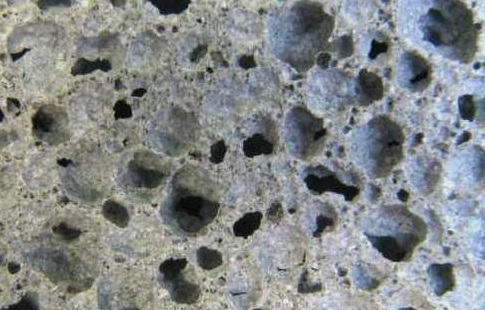It is a common misconception that the sealer determines how deep it will penetrate into the surface of the concrete. While the type of sealer is one of the determining factors, it isn’t the only one.
- Type of Concrete Sealers: This doesn’t have anything to do with the brand of concrete sealer, it has to do with the type of chemical. Take for example a silicate concrete sealer. Silicate concrete sealers are water based concrete sealers that penetrate into the surface of the concrete where they chemically react to form calcium silicate hydrate (CSH) within the pores. Sodium silicate concrete sealers have a larger molecule and lithium silicate sealers have a smaller molecule. Lithium silicates will penetrate slightly deeper than sodium silicates because they can navigate through smaller spaces easier. The difference won’t be inches, in fact, in many cases it will be relatively small.
- Porosity of the Concrete: This is perhaps one of the largest determining factors of penetration depth. Porous concrete will absorb more sealer than dense concrete, and a sealer will be able to penetrate deeper into a porous concrete substrate than a dense one. Sealers navigate through the pores of the concrete. The larger the pores, and the more pores available, the faster and deeper a sealer will be able to penetrate. Sealers can penetrate as much as 6″ into a porous concrete surface and as little as 1″ into a dense concrete surface.
- Purpose of Sealer: Some sealers are designed to penetrate while others are designed to sit on the surface. An acrylic sealer will penetrate ever so slightly, but only in order to bond. They are designed to sit on the surface of the concrete and leave behind a protective surface film. Silane siloxane sealers are designed to penetrate into the concrete and chemically react below the surface. Anything left on the surface will evaporate.
- Condition of the Concrete: Old concrete will absorb more material than new concrete because pores will increase with age. Previously sealed concrete can absorb less, especially if the old sealer is still in the pores.
- The PH of the concrete: This isn’t important for all sealers, but it is for some. If you apply a silane sealer to concrete that has a low PH, it will react very slow and in many cases, evaporate before being able to react. If you apply an acrylic sealer to concrete that isn’t neutral then it can cause pre-degradation of the acrylic sealer. This is why if you use an acid cleaner it is important to neutralize the concrete before applying an acrylic sealer.
- Location of the concrete: Exterior concrete is typically more porous than interior concrete so sealers will penetrate deeper on an exterior surface. If however the sealer isn’t properly applied, and applied in the middle of the day when the sun is hot, the sealer can evaporate before being able to react. If that is the case, it won’t be able to penetrate much if at all.
As you can see, there are several factors that contribute to penetration depth and each type of sealer will penetrate and react differently when applied to different types and conditions of concrete.
Size Doesn’t Matter – Quality Does
It isn’t the size of the barrier that’s important, it is the quality of the barrier. It is better to have a solid 1″ barrier than a diluted 5″ one. Let me explain.
Take for example a sodium silicate densifier which is designed to chemically react and form a crystalline barrier within the pores. Their primary purpose is to increase the density and surface strength of the concrete. Density and strength is increased as the crystalline barrier is formed within the pores. If the crystalline barrier is spread out between all pores the entire depth of the concrete you will get an increase in strength, but not by much. Additional coats will be required to fill up more space within the pores. If the crystalline barrier is an inch thick, but most of the pores were filled up during the first or second coat, then the surface of the concrete will receive a significant increase in strength.
Now, let’s look at acrylic sealers. Have you ever wondered why a high gloss sealer doesn’t look high gloss when applied to pavers? That’s because the pavers soak up most of the material. The material is distributed too far into the concrete. In order to achieve a high gloss with pavers you need to let the first coat fully cure so that the second coat doesn’t penetrate as deep as the first one did.
Lastly, let’s consider water repellent sealers. They chemically react to form a hydrophobic barrier within the pores. If you apply one coat of sealer to concrete, water absorption will be reduced, but not as much as it would with two coats. This is because one coat creates a “maze”, it fills up a portion of the pores but not the entire pore because the material is being sucked into the concrete. Water will get absorbed into the surface, but just slowly. When a second coat is applied, it fills in the areas missed during the first coat because it won’t be able to penetrate as deep now that the pores are partially filled. Instead of a “maze” you now have created a “wall”. Water will bead off of a surface sealed with two coats.
Penetration depth should never be a purchasing factor because penetration depth dilutes performance. You want a high quality barrier. Even if that barrier is only 1/4″ thick, if it is strong then your concrete is protected and the sealer is able to perform as it was designed to.

